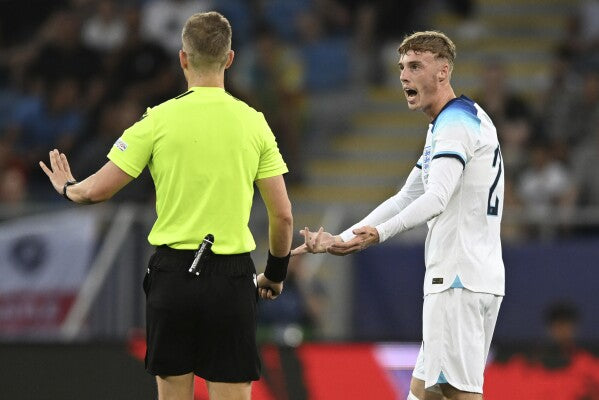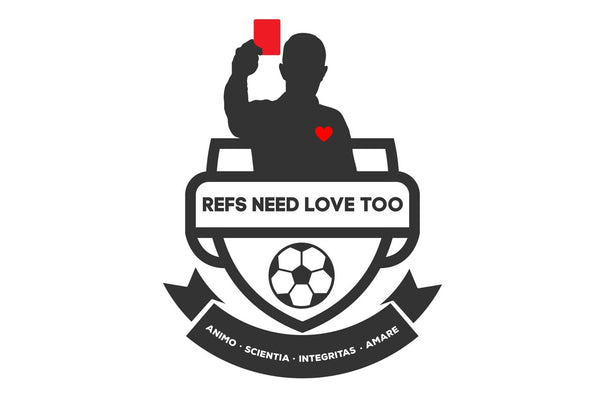
Well Timed Warnings Are A Key Match Control Tool
Share
Warnings: The Secret Sauce of Refereeing
Being a soccer referee isn’t just about calling fouls or handing out cards—sometimes, it’s all about the art of the warning. Whether it’s a stern look, a quiet word, or the classic "stop sign" hand gesture, warnings can save a game from spiraling into chaos. But knowing when and how to deliver these warnings is key, and that’s what keeps the game running smoothly. Let’s dive into the world of warnings and how they play a crucial role in managing the beautiful game.
The Right Warning, At the Right Time
Every game has its moments when tensions rise, and that’s where preventive officiating comes in. A well-placed warning can defuse a situation before it escalates. It's not about letting players off easy—there are times when rules are broken, and a foul is a foul. You can’t just give a warning for a blatant trip! But when players or coaches start pushing boundaries without crossing the line, a warning becomes an effective tool to keep things in check.
In some sports, warnings are built into the rules—like in soccer, where we have yellow cards as formal cautions. But not every situation calls for such formality. Sometimes, a subtle nod or a raised eyebrow does the trick. It’s about letting them know, “I see what you’re doing, and if you keep it up, there will be consequences.”
My Favorite Warning Line
Now, here’s the thing: when I give a warning, I’m not trying to be threatening. I don’t go for the classic “One more word, and you’re outta here!” That’s just asking for trouble. Instead, my go-to phrase is, “Coach, you’re doing [insert behavior here], and if it continues, there will be consequences.” The key is to follow through if they don’t stop—whether it’s a card, penalty, or whatever the situation requires. The players and coaches appreciate that consistency, and it helps maintain respect.
How to Warn Coaches, Players, and Fans
Coaches? They’re in a league of their own. Head coaches often create conflict—hey, it’s part of their job! I try to give them more leeway, but there’s a line, and once it’s crossed, it’s time for a more formal warning. And if their bench players or staff start causing problems? No hesitation—I go straight to the head coach and let them handle it. No coach wants to deal with a bench that's going to cost them a penalty.
Players, on the other hand, respond well to constant communication. Most of the time, a quick acknowledgment of their concerns is enough to calm them down. However, if someone’s playing too rough or getting reckless, I don’t wait around—penalty right away. But if it’s just over-exuberance, a little warning like, “Hey, that’s enough,” lets them know they’re being watched without needing to stop the game.
And fans? Booing the ref is as old as the game itself! You can’t be thin-skinned about it. If the crowd gets a bit rowdy, ignore it unless it crosses the line. When it does, I let game management handle it. We’re not there to wag fingers at the fans—that’s only going to make things worse!
When to Warn, When to Act
Sometimes, warnings aren’t enough, and that’s okay! In continuous sports like soccer, there’s often no time to stop the game and deliver a verbal warning. That’s when body language becomes your best friend. A quick glance, a thumbs up, or even a simple gesture can communicate just as effectively as words.
Warnings are all about timing. A player who’s a little too aggressive but hasn’t crossed the line yet might just need a gentle reminder to cool it. On the flip side, serious violations—like threats, foul language, or dangerous play—need to be dealt with immediately. No warning required—just act.
Communication is Key
At the end of the day, the best referees are the ones who communicate clearly. That’s how we keep the game flowing, and it’s how we earn respect from both players and coaches. Whether it’s a formal warning or just a quiet word, good communication on the pitch makes all the difference.
And remember, even in leagues where language barriers exist, body language, tone, and gestures go a long way. Players can feel your presence and know exactly what you’re communicating, even without words. We’re all out there to enjoy the game, so let’s make it as smooth and fun as possible!
So, next time you see a ref flash a look or give a thumbs up, know that they’re not just watching—they’re managing the game like pros, keeping the balance between order and chaos, one warning at a time.
